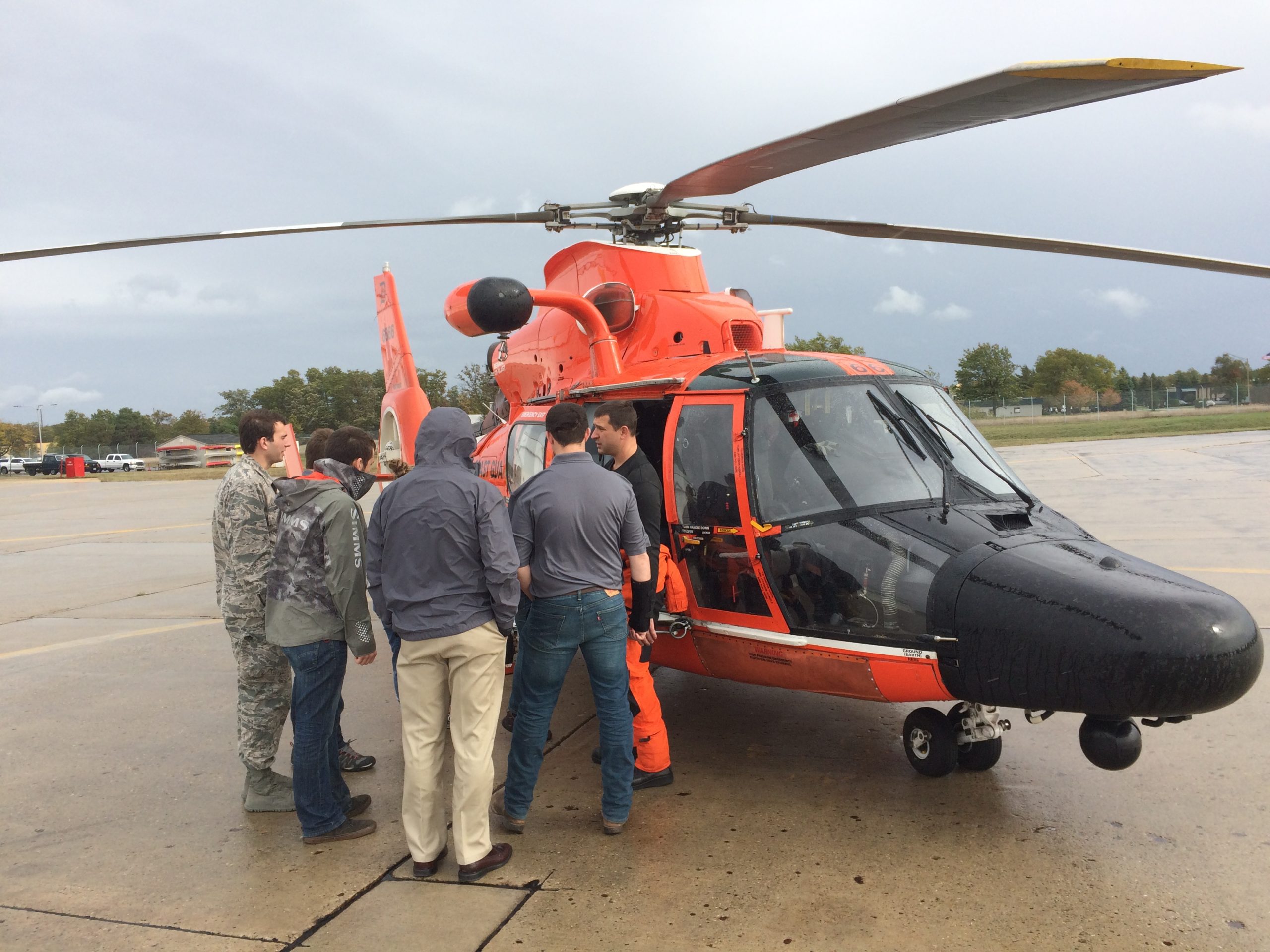WRIGHT-PATTERSON AIR FORCE BASE, Ohio — Air Force Research Laboratory junior force researchers are collaborating with Michigan Technological University to reimagine life raft designs for mass rescue operations at sea.
In support of a Memorandum of Understanding between AFRL and the United States Coast Guard, researchers from the AFRL Junior Force Warfighter Operations in RX team, or JFWORX, are working with a team of engineering students, along with Coast Guard researchers, to design a compact, high-capacity maritime rescue device that can be deployed quickly in case of an emergency at sea.
Although cruise ships and other seafaring vessels are required to carry more lifeboats than needed, these emergency vessels can potentially be rendered ineffective depending on the situation. For instance, if a ship is listing heavily to one side, the lifeboats on both sides may be difficult or impossible to deploy. Such a scenario could spell a life-threatening situation for passengers.
To address such a potential hazard, the Coast Guard is seeking lightweight, ultra-compact, easily-deployable rafts that would be capable of carrying large numbers of passengers for up to 24 hours. Such a device could be dropped from a helicopter and deployed for short-term use until rescue vessels could arrive on the scene.
Eager to tackle the challenge, AFRL JFWORX researchers are employing a two-pronged collaborative strategy, working closely with the Michigan Tech student design team while harnessing the talents of their own JFWORX in-house team as well.
“JFWORX is using human-centered design principles to understand the needs of those stranded in the water, while also using our materials expertise to create a feasible solution,” said 2nd Lt. Elias Johnson, AFRL project manager. “In addition to our expertise here at AFRL and with the Coast Guard, we’ve partnered with students from Michigan Tech. Together we hope with our diverse backgrounds, focus on the end user, and technical knowledge we can save lives with our design.”
The MTU students and the AFRL researchers led separate ideation events and then came together at the U.S. Coast Guard Station in Traverse City, Mich., to combine efforts and pursue some of the best ideas. Johnson said brainstorming individually and then expanding on ideas as a team is the best way to produce a high number of innovative solutions.
He added that since the rescue device is required only to serve as a short-term floatation vessel, it provides a great rapid-design student opportunity with a broad range of possibilities.
During the ideation session at Traverse City, the Coast Guard arranged for a special visit that included a helicopter tour and interviews with helicopters pilots, crew members, and rescue swimmers. This up-close perspective helped the students understand how the project’s strict weight and space requirements were derived and to view ocean rescue situations from an operator’s perspective.
“It’s an entirely new design space,” said Johnson. “Most of the current life rafts are designed to meet ‘safety of life at sea’ requirements. That requires rafts to have flares, extra safety equipment, and be capable of staying afloat for several weeks. With this effort, we just want to keep people out of the water until larger rescue crews can arrive.”
Working closely with Michigan Tech, Johnson is sharing innovation techniques and guiding students through methods for creative design in which they break the project into four distinct phases: Discover, Define, Develop, and Deliver. This structured method and iterative process gives the students the opportunity to devise unique solutions, and exemplifies how engineers in the workforce approach design challenges.
Michigan Tech student project leader Jacob Adams says the guidance he and his teammates have received from AFRL has given them the tools needed to approach this impactful project with their own ideas and independent thinking.
“I’m glad we are working with AFRL, as they are very responsive and understand that it’s a student project,” Adams said. “You can tell the goal from their end is to help us learn as we do the project. It is also nice to be respected enough to handle the big project that this is before we’ve even completed our degrees.”
Johnson said that by working with the students, AFRL and the Coast Guard are able to achieve project goals much faster than they would through the traditional contracting process. He added that the students contribute their own personal experiences to the project, providing a fresh perspective on the subject matter.
For student team member Anna Isaacson, who hopes someday to work within the Department of Defense, the experience has been invaluable. “[2nd Lt. Johnson] has been very resourceful and is constantly giving suggestions on how we can not only become better, more organized engineers, but how we can take our already existing skills and apply them to the problem we are facing.”
Both the AFRL and Michigan Tech teams are working toward the goal of designing a device that would hold 100 people and weigh 100 pounds or less. Within the coming year, the two teams will formulate ideas, downselect a design to prototype, and produce a proof of concept. After the proof of concept is finalized, Johnson says the team hopes to work toward transitioning it for production.
Johnson says this project is one that benefits everyone involved. The Coast Guard gets innovative prototyping from a team of young creative minds, the students gain real world engineering experience, and the AFRL team builds working relationships with the next generation of engineers.
For Johnson himself, the rewards go far beyond the immediate, project-centered returns.
“Our Coast Guard partners have given both me and the students the unique opportunity to work on a problem we wouldn’t normally have the chance to explore,” he said. “Through their assistance, we have this great opportunity to impact these young engineers in a way that will help them in their future careers. That is extremely rewarding!”

